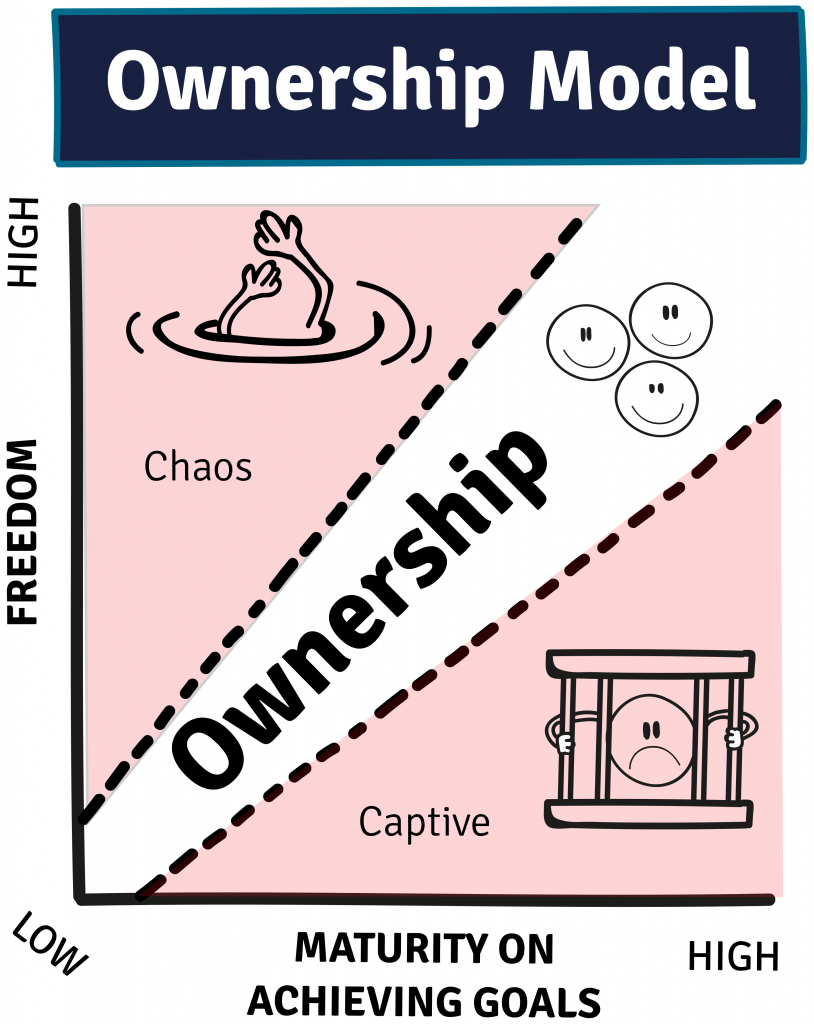×![]()

INCREASE THE OWNERSHIP OF YOUR PEOPLE WITH AN OWNERSHIP MODEL
A team of proactive, proud, initiative-taking and committed team members. That’s what a focus on ownership brings your organization. But how do you, as an agile leader, facilitate this ownership? An ownership model can help. Discover how to use this model within your team and organization.
51% of the employees don’t take ownership. While it’s proven that more ownership and engagement leads to more profit.
How to prevent anarchy?
How do you find the right balance between micromanagement and anarchy? And what do you do when teams want more freedom, while you doubt if they are ready for this? What are the risks involved if you do give them more freedom?
These questions are part of the development process of an agile leader. And these are exactly the sort of questions that an ownership model helps you answer.
Why is ownership so important?
Today’s work is complex. Teams need to continuously develop their skills to stay ahead of the curve. And they need to keep coming up with creative solutions that meet the wishes and expectations of demanding customers. Team members must therefore be able to make their own decisions, and not have to wait. That is what ownership stands for: teams have the capacity to face unexpected challenges themselves, see opportunities, and learn from each other and their customers.Why is it so difficult to take ownership?
Ownership cannot be imposed. An agile leader must create the right conditions. This means, many things. Like; clarity what is expected, clarity on roles and mandate. Among others: give your teams the freedom to take this ownership.In 5 steps to more ownership
Reflect on your leadership
Step 4
How an ownership model works
An ownership model visualizes the relationship between the freedom and the maturity of the team. Re-lead developed a practical version. There are two axes, two red areas, and a white area. When the degree of freedom (y-axis) and the competence of the team (x-axis) are in balance (white area), teams can take ownership. You can read more about it ‘Ownership Model’Varying ownership model per organization
An ownership model looks roughly the same for every organization. Nevertheless, the exact interpretation differs per organization. It depends on the existing company culture, the need to grow, the competition and the speed at which the market is changing.
Agile Leadership: unlock the passion, drive, liveliness and ownership of your teams. So they can unlock awesome customer value.






